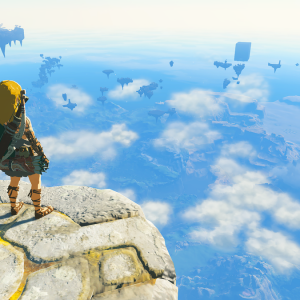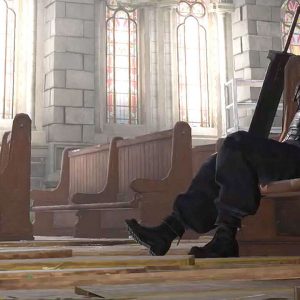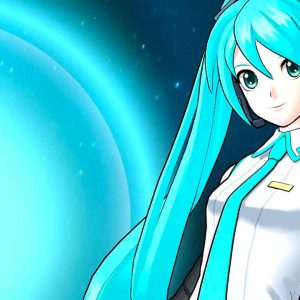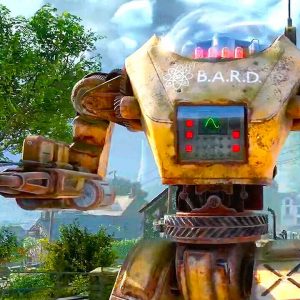While 2021’s Sherlock Holmes Chapter One had the world’s most iconic detective confronting the ghosts from his past, Sherlock Holmes: The Awakened has him dusting off his deerstalker cap in order to investigate a cult worshiping a cosmic, Cthulu-like presence. However, despite the clear influence of HP Lovecraft, The Awakened presents a mystery that’s surprisingly light on scares, with the majority of its attempts to unsettle coming across as more silly than genuinely spine-chilling. Although there was still a solid amount of investigations and crime scene recreations to sink my teeth into over the course of its 10 hours, it was hard to fully buy into Sherlock’s supposed battles with his own sanity at the center of the story when I struggled to find anything to fear in his surroundings.
A remake of the 2007 adventure of the same name, Sherlock Holmes: The Awakened has been rebuilt using the same engine that powered Chapter One, and its plot has been retooled slightly in order to make it fit in as a direct sequel to that 2021 origin story. The friendship between Holmes and Dr. John Watson is presented as being in its infancy, with Watson regularly pressing Holmes for information about what went down on the island of Cordona in Chapter One in an effort to peel back the layers and find out exactly what makes the detail-obsessed detective tick. While the writing and performances are of a reasonable standard, the dialogue scenes between the two crime-busting BFFs would probably have been a lot more engrossing were I not so regularly distracted by the extremely loose lip syncing, which makes it seem like each character is delivering their lines directly into the hot end of a hair dryer.
“
Unlike Chapter One, which populates its open-world island setting with a variety of cases and side stories to uncover, The Awakened is a far more linear affair that sends Holmes and Watson globe-trotting from the streets of London to an asylum in the Swiss Alps to the swampland of New Orleans and back again. The bulk of these settings present a substantial space to explore, but there’s almost no incentive to do so since I found little of consequence to uncover off the main story path. In fact, it wasn’t until I had reached the final hours of the journey that I finally managed to stumble into a side case in London involving a dead spy, but it was jarringly snuffed out by Mycroft Holmes before it could develop into anything of substance. So the only real mystery surrounding it was trying to determine why it was included at all.
CSI: Old Blighty
For the most part, Sherlock’s crime scene investigations are conducted in much the same manner as they are in Chapter One: Presented with the often-grisly aftermath of some wrongdoing, you must first pixel-hunt your away around the scene to gather evidence like bloodstains and footprints, interview potential witnesses or known acquaintances of the victim, and then determine the sequence of events by shuffling through possible scenarios and the order in which they took place via a visual representation of Sherlock’s imagination. While it can still be rewarding to piece it all together, there’s no question that the cases in The Awakened are far more straightforward than they were in Chapter One. Whereas the previous adventure had Sherlock investigating evidence of vampires in a graveyard and determining the whereabouts of an escaped elephant, The Awakened sticks mostly to more generic kidnappings and murder, and is all the more forgettable for it.
Not only are the crimes less imaginative, but there’s also very little risk of failure in solving them this time around. Whereas in Chapter One it’s possible to accidentally send innocent people to jail if you aren’t methodical enough in your casework, in The Awakened there’s only ever one possible perpetrator to accuse. That means it can be tempting to just brute-force your way through to the right conclusion, seeing as the only potential penalty for making mistakes along the way is fewer rewards unlocked in the bonus character art menu.
This isn’t the only area that the system has been streamlined, either: Chapter One’s disguise system is ignored for the most part, and its archive research is now confined to paging through the pause menu rather than actually visiting a local newspaper office. It all results in casework that feels somewhat superficial compared to that of the previous game, and in spite of its multiple locations, it’s considerably smaller in scope, too.
“
On the plus side, the ill-conceived combat sections of Chapter One were apparently tossed overboard on the ship ride home from Cordona, keeping the emphasis on the brainpower of Sherlock rather than the firepower of his flintlock. That seems more appropriate for the character.
Scarcity of Scares
Instead of breaking up the casework with combat, The Awakened occasionally drags Sherlock into a craggy, Lovecraftian otherworld and forces you to complete a series of environmental puzzles in order to return him to reality. However, the solutions to these puzzles are either painfully obvious – typically following audible drones to locate floor panel switches and the like – or unintentionally hilarious, at times requiring you to repeatedly throw Sherlock off ledges or into spikey traps like he’s Bill Murray desperately trying to escape the cycle of Groundhog Day. As a result, these dreamlike diversions are about as psychologically scarring as a stubbed toe, and don’t do a particularly good job of conveying Sherlock’s apparently fraying mental state.
Occasionally, hallucinations and other encounters intended to disturb will bleed into the real world too, but these are arguably even more goofy. Retrieving a doll for a patient in the bowels of the archaic Edelweiss mental hospital culminates in an act of ventriloquism that’s more hokey than horrific, while the mutterings of an animated corpse in a crypt beneath the Port of London sound like the gargling of a caveman discovering mouthwash for the first time. Even the climax of the story, a showdown between Sherlock and the main antagonist surrounded by whispering hordes of hooded disciples, fails to stick the landing by tripping itself up with a series of clumsy quick-time events that sap the sequence of any real suspense.
It is worth pointing out the somewhat extreme circumstances surrounding the creation of The Awakened. Developer Frogwares is based in Ukraine, and a disclaimer that greets you ahead of the title screen states that development of this remake commenced only a couple of months after Russia began its invasion of the country in early 2022. Game development is an incredibly challenging business at the best of times, and I can’t imagine the levels of stress that the threat of war would inflict on all personnel involved. Unfortunately, that adversity is evident in The Awakened, which suffers numerous cut corners, from the abrupt transitions between several late-game sequences, to the recycling of character models and other assets throughout the adventure. I wasn’t alive in 1882 so I can’t be certain that newsstands in London weren’t identical to those in New Orleans, but I doubt it.





















-150x150.jpg)
